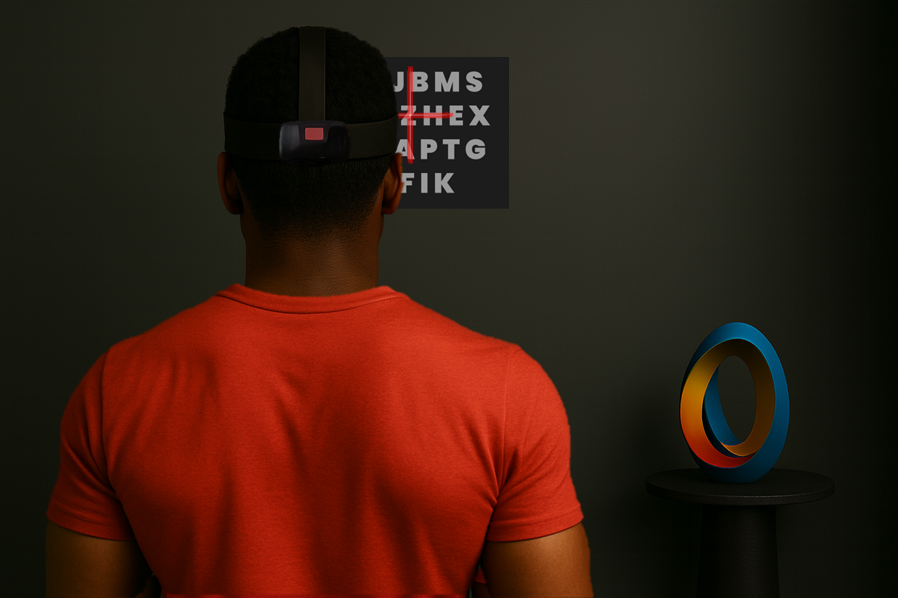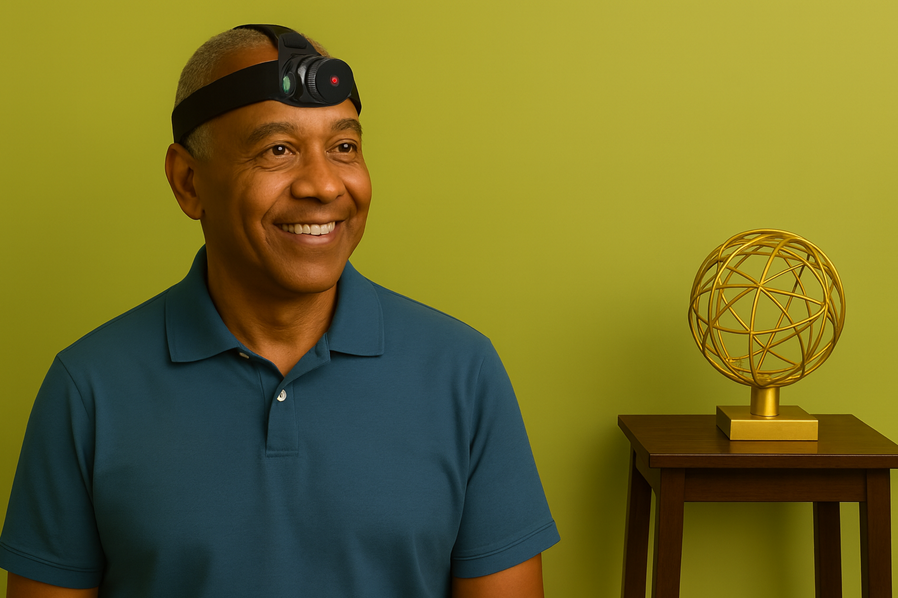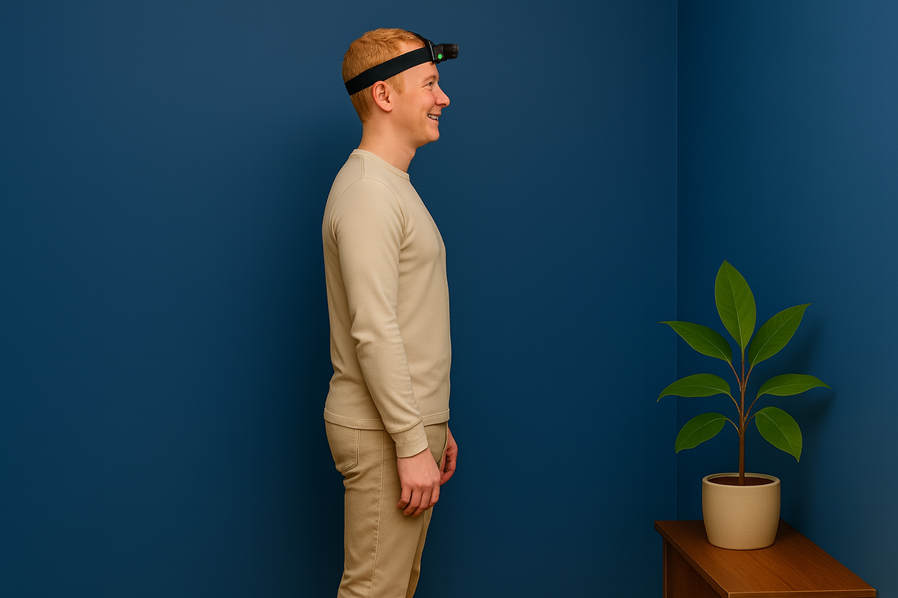Dual-Task Reactivity & Cognitive Load
This group integrates the visual and oculomotor systems. Tasks such as target sequencing, object pursuit and simultaneous reading require the cross-hair to track moving or complex patterns while eyes and limbs engage in purposeful activity. The goal is to restore smooth pursuit, saccadic accuracy and vestibulo-ocular reflex function, ensuring that gaze remains stable.
-
E.1
-
E.2
-
E.3
-
E.4
-
E.5
-
E.6
-
E.7
-
E.8
-
E.9
-
E.10

Clock–Face Scan
Stand upright and imagine a clock face around your feet.
Keep the cross-hair on a central wall point.
When your partner calls a time (e.g. “3 o’clock”), quickly step and turn to face that direction, then re-aim the cross-hair as your new forward.
Adjust the speed to calls to suit.
Why it matters?
Combines full-body rotational control with auditory processing and visual targeting.
This trains the ability to rapidly reorient posture and head position in any direction, while reinforcing midline awareness and balance recovery.
These are key skills for dynamic environments where rapid scanning and turning are required, such as sport, driving or busy public spaces.

Shape Trace & Alphabet Backwards
Start at the centre of the pattern. Trace the white zig-zag path through points 1 to 4, return to centre, then trace the green triangle path through points A to D.
While tracing, recite the alphabet backwards from Z to A.
Maintain a steady cross-hair and controlled head movement.
Why it matters?
This task combines visual–motor control with cognitive challenge.
Tracing structured paths while reciting the alphabet backwards builds coordination, memory and focus under load.
Helps improve multitasking, planning and control of head movement during complex tasks.

Infinity Loop with Pause
Trace a horizontal infinity loop slowly and smoothly using head movement only, keeping the cross-hair aligned with the line throughout.
When your partner gives a verbal cue (e.g. a clap or “pause”), freeze the crosshair in place without moving your head or body.
Hold still for five seconds, then resume tracing from the exact point you stopped.
Why it matters?
Looking up and down with only your neck, without moving your back or shoulders, builds precision and control through your full vertical range of movement.
This improves how your neck muscles work together to stay steady and accurate, even when changing levels.
It also helps strengthen the link between what your eyes are doing and how your neck responds.

Backward Mirror
Wear the headtorch backwards so the cross-hair projects behind you.
Face a mirror and use it to guide the cross-hair as you trace a spiral pattern placed behind you on the wall.
Complete one spiral clockwise, then one anticlockwise, keeping movements slow, smooth and aligned throughout without turning your body.
Why it matters?
Enhances spatial awareness, postural control and visual-motor coordination when working from reversed visual feedback.
This task challenges the ability to process mirrored movement while maintaining steady head motion, encouraging adaptability in non-standard visual environments.
These skills are relevant for daily movement in crowds, reversing direction or using rear-view references.
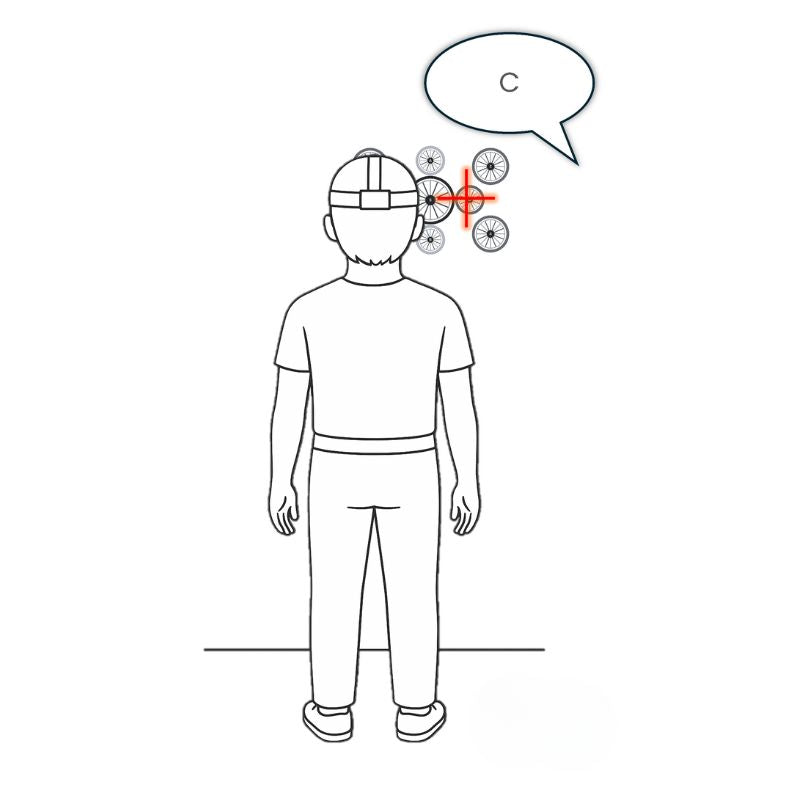
Reverse–Match Target
Stand facing the cartwheel diagram with your cross-hair centred on wheel “5.”
A partner calls out one of the surrounding targets (e.g. “C” or “2”), and you must move the cross-hair to its mirror-opposite on the wheel (e.g. “D” or “3”).
Return to the centre after each correct match.
Continue keeping movements smooth and accurate.
Why it matters?
This exercise trains mental rotation, spatial reasoning and response inhibition.
By requiring the brain to reverse a direction and execute a precise motor response, it strengthens bilateral coordination and midline awareness.
It also promotes cognitive flexibility and helps correct over-dominance in one direction of gaze or movement.
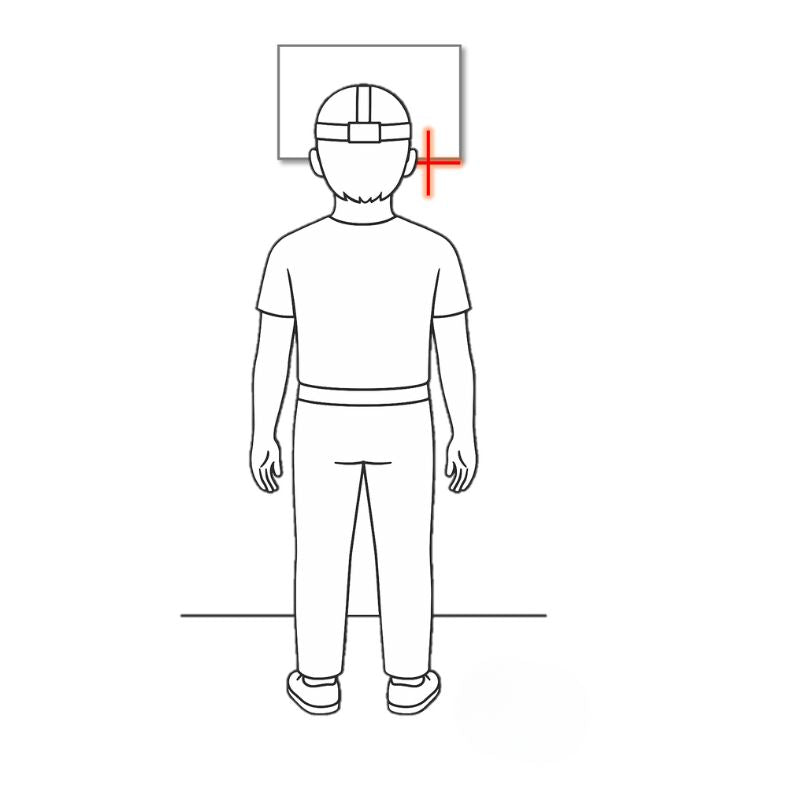
High–Low Speed Trace
Fix an A3 sheet to the wall in landscape orientation so the top and bottom edges form two horizontal lines.
Using only head movement, trace the top edge slowly with the cross-hair, then trace the bottom edge at a faster pace.
Alternate between slow tracing on top and fast tracing on the bottom, maintaining control and accuracy throughout.
Pause and repeat in the opposite direction.
Why it matters?
Trains smooth transitions between different gaze speeds and vertical levels, improving head movement precision and adaptability.
Enhances cervical motor control in situations requiring quick adjustments and layered focus, such as switching between distant and close visual tasks or scanning across uneven environments.
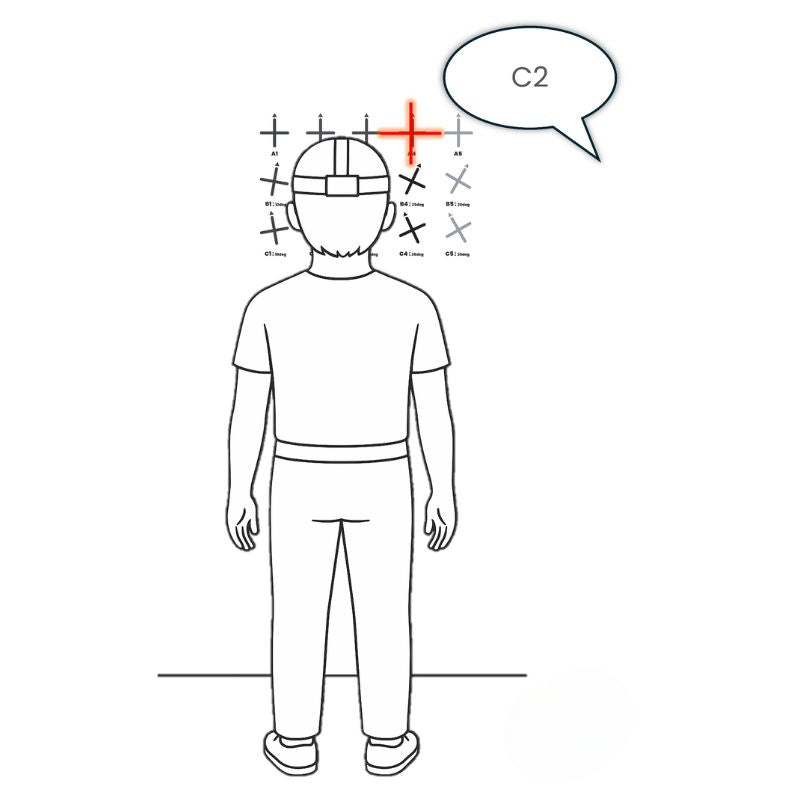
Word–Triggered Head Shift
Stand facing a wall displaying the angled cross-hair targets (A1–C5).
A partner calls out random pattern codes such as “B2” or “C4” in varied order.
On hearing a code, quickly move your head to align the cross-hair with the corresponding target, then return to centre.
Maintain good posture and accuracy.
Why it matters?
This trains your ability to keep your head steady even when your brain is busy.
By adding a thinking task, your neck muscles have to hold their position without direct focus.
This helps your body learn how to stay in control during challenging or distracting situations and builds endurance in your postural system when mental effort is high.
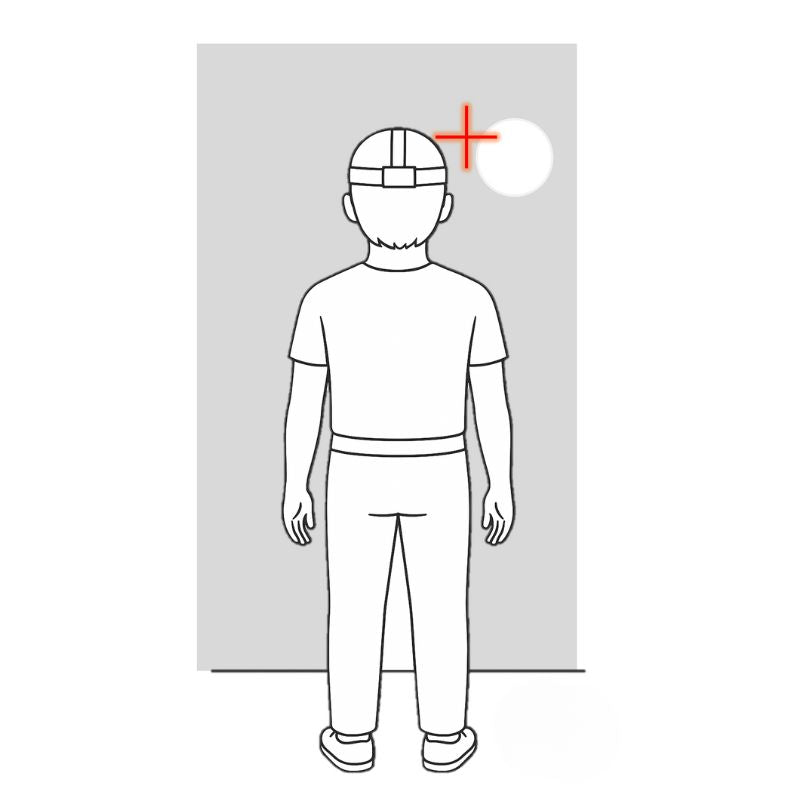
Flash React
Stand facing a blank wall while a partner uses a torch to flashlight briefly at random spots around a central point.
Each time the light appears, quickly move your head to align the cross-hair with the illuminated area, then return to centre.
React as quickly and accurately as possible.
Why it matters?
Develops rapid visual detection and reflexive head movement in response to sudden, unpredictable cues.
Reinforces fast gaze redirection and postural stability, enhancing the brain’s ability to integrate visual input with motor action.
Particularly valuable for improving reaction speed, situational awareness and spatial decision-making in sport, traffic navigation or any environment with changing visual demands.
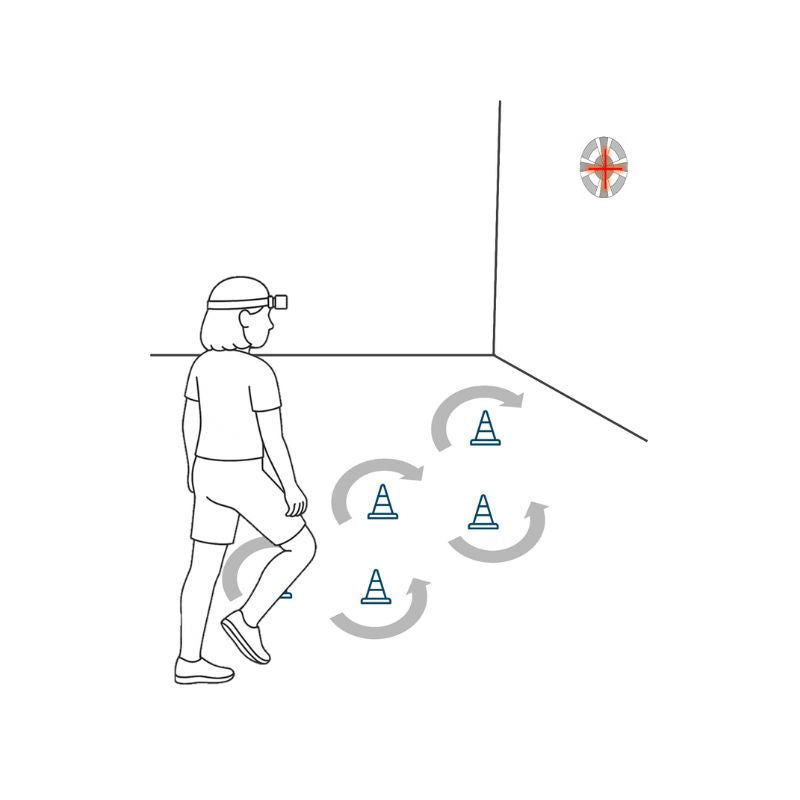
Cone Walk Fixation
Arrange five cones in a zig-zag pattern on the floor. Fix the cross-hair on a central wall target directly ahead.
Walk through the cones at a steady pace, keeping your head still and the cross-hair aligned with the target throughout.
Complete passes without turning your head or looking down.
Why it matters?
Strengthens the ability to maintain cervical stability and visual fixation while the body navigates changes in direction.
Challenges coordination, postural alignment and lower-limb control under visual constraint, simulating real-world tasks that require multitasking—such as walking in busy environments, sport-specific footwork or maintaining focus during physical redirection.

Beam Walk Alternation
Place a 3-metre line or strip of tape on the floor to simulate a narrow beam.
Walk heel-to-toe along the line with arms relaxed. Every second step, turn your head to one side and hold the cross-hair at the same height as when facing forward.
Return to centre before the next step. Alternate left and right turns with each second step.
Why it matters?
This exercise combines fine balance with controlled head movement to improve postural symmetry, cervical coordination and visual stability.
Holding the cross-hair level reinforces even neck control while walking, supporting the ability to scan side-to-side without losing footing.
This is useful for navigating tight spaces, busy environments or sport-specific tasks.



